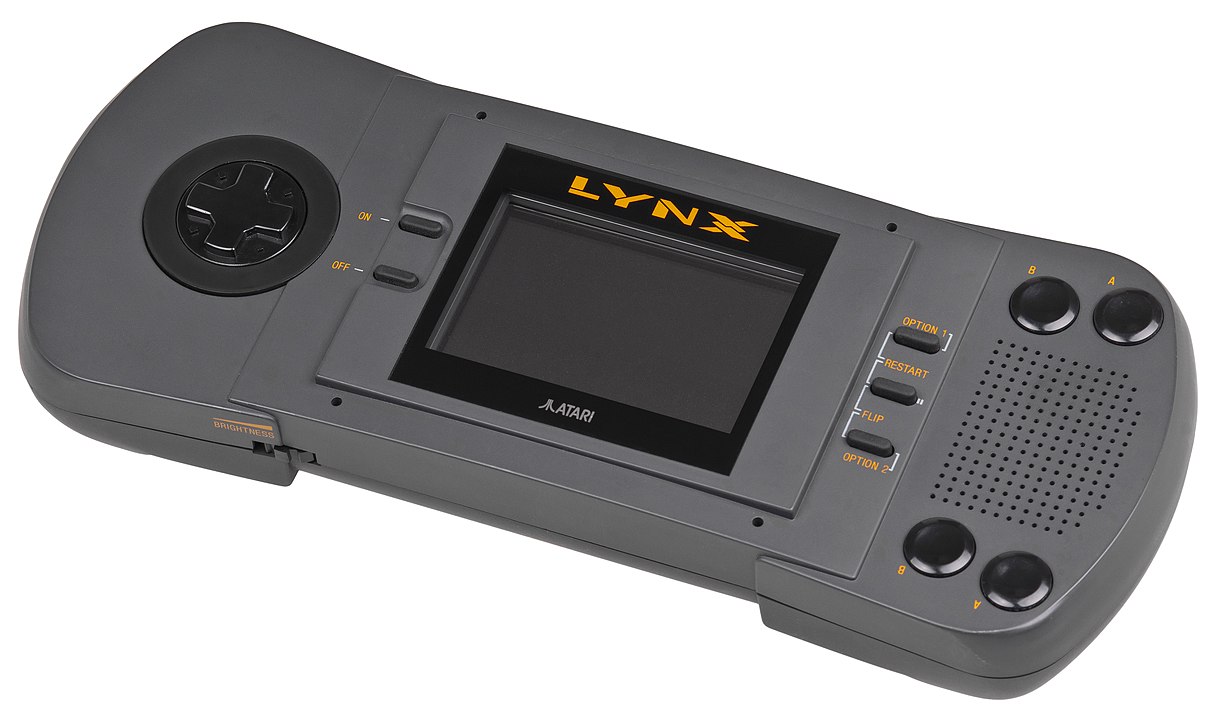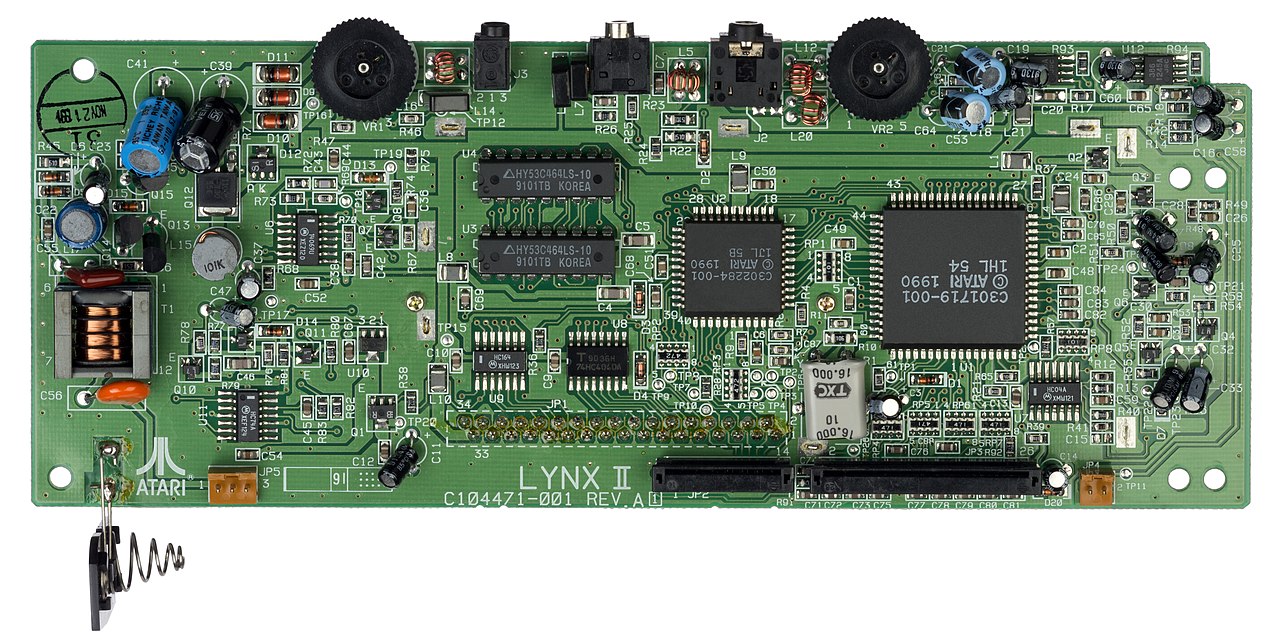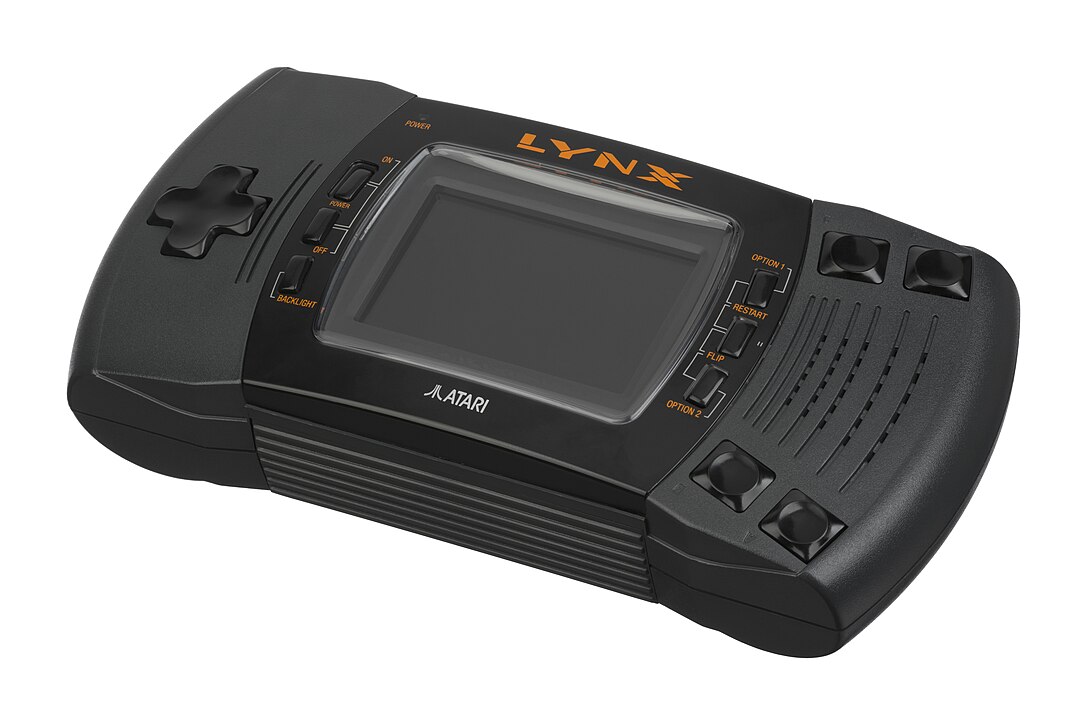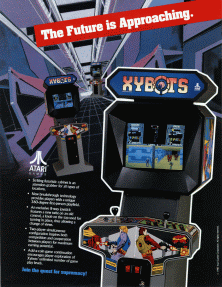In the annals of gaming history, the Atari Lynx stands as a remarkable milestone. Emerging from the corridors of Atari Corporation in September 1989 in North America, and subsequently in 1990 in Europe and Japan, this hybrid 8/16-bit fourth-generation handheld game console redefined the portable gaming experience. Notably, it etched its name in the record books as the very first handheld console to boast a color liquid-crystal display. Join us as we embark on a journey to unravel the fascinating history and impact of the Atari Lynx – a console that not only pushed the boundaries of portable gaming but also sparked fierce competition in the handheld gaming arena.
A Brief History Of The Atari Lynx
The Atari Lynx – an iconic chapter in the handheld gaming saga, had its roots in a project originally known as the Handy Game, conceived by Epyx. In 1986, the sparks of innovation were ignited when David Morse – a former Amiga manager, and now part of Epyx, was prompted by his son’s question: Could a portable gaming system be created? This curiosity led to a pivotal meeting with R. J. Mical and Dave Needle, both esteemed former Amiga designers. David Morse’s persuasive vision convinced Mical and Needle to come on board, and they joined Epyx as integral design team members. The planning and design phase of this groundbreaking console commenced in 1986 and reached completion in 1987. The Handy system was unveiled to the world at the Winter Consumer Electronics Show (CES) in January 1989, marking the beginning of its transformative journey.
However, Epyx faced financial challenges, prompting a quest for partners. While Nintendo, Sega, and other industry giants declined, a crucial partnership emerged between Atari and Epyx. Under this agreement, Atari would assume responsibility for production and marketing, while Epyx would focus on software development. Epyx’s financial troubles eventually led to bankruptcy, effectively passing the torch to Atari, who assumed control of the entire project. Interestingly, both Atari and other developers found themselves acquiring Amiga systems from their arch-rival, Commodore, to facilitate the development of software for the Lynx.
The Handy was designed to run games from cartridge formats, a design that necessitated the copying of game data from ROM to RAM before gameplay could commence. This process, while innovative, resulted in slower initial loading times, which was a trade-off of this early portable gaming technology. Notably, remnants of a cassette tape interface were discovered, hinting at the possibility of tape-based game loading. However, developers clarified that this was not the case, dispelling early reports that suggested games were loaded from tape. There were also considerations about the use of hard disks for storage.
The networking system, initially designed to operate through infrared links and codenamed RedEye, underwent significant changes. Before its final release, it transitioned to a cable-based networking system due to the infrared beam’s susceptibility to interruption when players moved through it. As Atari took the reins, they made alterations to the internal speaker and removed the thumbstick on the control pad. At the Summer 1989 CES, Atari’s unveiling, initially dubbed the “Portable Color Entertainment System,” was ultimately rebranded as the “Lynx” upon distribution to resellers. The initial retail price in the United States was set at a notable $179.95, equivalent to approximately $420 in 2022—a significant investment for gaming enthusiasts eager to embrace this pioneering handheld console. [1]
The Launch of Atari Lynx
The Atari Lynx made a triumphant entry into the gaming arena with a highly successful launch. Atari proudly reported that, during the initial month of its U.S. release, approximately 90% of the 50,000 units shipped found eager buyers, although within a limited launch in New York. As reported by the Associated Press, sales figures for 1990 in the United States soared to approximately 500,000 units. By late 1991, Atari’s sales estimates reached around 800,000 units, a number that Atari claimed aligned with their initial projections. [2] However, when viewed through the lens of lifetime sales up to 1995, the Lynx, when combined with the Game Gear, fell short of the mark with fewer than 7 million units sold. This was in stark contrast to the Game Boy, which had achieved an impressive 16 million units sold by 1995. [2] The Game Boy’s success could be attributed to its durability, lower price point, significantly longer battery life, bundling with the blockbuster title Tetris, and a more extensive and appealing game library.
In tandem with the console’s evolution, the design of game cartridges also underwent a transformation during the first year of the Lynx’s release. The initial flat cartridge design, intended for stackability and easy storage, proved challenging to remove from the console. Consequently, a second “tabbed” or “ridged” design was introduced, featuring small tabs on the underside for ease of removal. While the original flat cartridges could stack atop the newer ones, the latter did not accommodate easy stacking, nor were they easily storable. Hence, a third “curved lip” style emerged, becoming the standard for all official and third-party cartridges throughout the console’s lifespan.
In May 1991, Sega entered the handheld gaming arena with its Game Gear, boasting a color screen. Although the Game Gear’s battery life was slightly shorter (3–4 hours compared to the Lynx’s 4-5 hours), it had a more extensive game library, and a smaller form factor, and was priced $30 lower than the Lynx at launch. Hence, the Lynx maintained a presence on store shelves well into the mid-1990s, partly due to its association with the Atari Jaguar launch. Magazines like Ultimate Future Games continued to feature the Lynx alongside the new wave of 32-bit and 64-bit consoles, ensuring its enduring visibility among gamers and collectors.
Versions Of The Atari Lynx
- Atari Lynx – The original Atari Lynx was a pioneering handheld gaming device, featuring a cartridge-based system paired with a powerful 16-bit processor and a vibrant color LCD screen. Its graphical prowess during its era was truly impressive. However, despite its technological marvel, the Lynx faced a formidable challenge in the form of the more budget-friendly Nintendo GameBoy, which often drew parents’ attention due to its lower price point. Nevertheless, the Atari Lynx distinguished itself as a trailblazer. It featured an innovative ambidextrous design, catering to both left and right-handed players, a feature ahead of its time. Additionally, it offered the unique capability of multiplayer support by allowing up to 15 Lynx units to connect simultaneously, enhancing the social dimension of gaming.
- Atari Lynx II – In July 1991, Atari unveiled the second iteration of the Atari Lynx, aptly named the Atari Lynx II. This updated version addressed some of the critical concerns that players had voiced about the original console. The Lynx II presented a more compact and ergonomic design, effectively remedying one of the primary grievances associated with its predecessor. Additionally, it featured enhanced battery life, a crucial improvement for gamers on the go, and introduced a headphone jack for stereo audio output, enriching the gaming experience. Despite these commendable upgrades, the Lynx II faced a challenging reality. The handheld gaming market was still under the dominant sway of the Nintendo GameBoy. Even with the introduction of a power-saving option to extend battery life and a price reduction to $99, Atari’s efforts yielded only a modest increase in sales. The Lynx II embodied the potential that the original Lynx had promised, and it had the capacity to reshape the handheld gaming landscape. However, the GameBoy’s enduring dominance proved insurmountable, casting a shadow over Atari’s aspirations for handheld gaming supremacy.
Atari Lynx’s Released Games
1. Pac-Land: In a surprising evolution, Pac-Man has undergone a transformation, complete with arms, legs, and a stylish hat. However, don’t think for a moment that the ghosts have taken a backseat; they remain the primary antagonists, hell-bent on thwarting our cheese-wheel-shaped hero from rescuing a helpless fairy. It thrusts Pac-Man into an entirely new environment, a delightful departure from the norm. Admittedly, the graphics may not rival today’s high-definition visuals, but they possess a nostalgic charm reminiscent of an early Microsoft Paint demo. For those seeking a refreshing take on a beloved classic, this adventure is a welcome change of pace. Much like the original Pac-Man games, your objective remains to gobble up fruit and outmaneuver persistent enemies. However, Pac-Land introduces new elements, such as springboards for exhilarating bounces, hurdles to leap over gracefully, and a time limit that keeps you on your toes as you strive to advance to the next round.
2. S.T.U.N. Runner: This is an exhilarating arcade-style racing game that allows players to experience high-speed racing in a futuristic setting. In S.T.U.N. Runner (which stands for “Spread Tunnel Underground Network Runner”), players take on the role of a pilot in a high-tech, anti-gravity vehicle known as a “runner.” The game is set in a futuristic world where players race through a network of tunnels, competing against both the clock and rival runners. Its blistering speed and intense action characterizes the gameplay in S.T.U.N. Runner. Players must navigate their runners through a series of tunnels filled with twists, turns, and obstacles while avoiding collisions and racing against the clock. The game’s controls are responsive, allowing players to execute precise maneuvers to avoid hazards and stay ahead of the competition.
3. Xybots: This arcade-style action game was ported to the Atari Lynx in 1991. Developed and published by Atari Games, this title brought fast-paced 3D shooting action to the handheld console, offering a unique gaming experience for Lynx players. In Xybots, players assume the role of a futuristic commando exploring a series of maze-like environments filled with hostile robots and alien creatures known as Xybots. The game is played from an isometric perspective, adding depth to the graphics and gameplay. The game’s primary objective is to navigate through the labyrinthine levels, defeating enemies and collecting power-ups along the way. The goal is to reach the exit of each level while avoiding traps and hazards.
4. Shadow of the Beast: This may not appear to be the most advanced game in today’s gaming landscape, but it stood as a remarkable feat of graphical prowess back in the day. To capture the essence of its significance, one might say it was similar to witnessing the breathtaking world of Breath of the Wild on the Nintendo Switch for the very first time. This game boasted an astonishing 12 layers that composed its intricately designed backgrounds. It was a visual spectacle ahead of its time. Shadow of the Beast offers a classic gaming experience with a quintessentially ’90s vibe. Players engage in epic battles against formidable sub-bosses, execute gravity-defying flying kicks, and confront the agents of darkness with unyielding determination and an arsenal of combat moves. It’s a testament to the enduring appeal of this title that it remains one of the finest offerings in the Atari Lynx game library, without a shadow of a doubt.
5. RoadBlasters: It is an exciting vehicular combat arcade game that was developed and published by Atari Games. This title brought fast-paced action and vehicular mayhem to the palm of players’ hands. In RoadBlasters, players take control of an armed sports car equipped with advanced weaponry and set out on a post-apocalyptic journey through a series of treacherous, futuristic highways. The objective is to survive the perilous roadways while taking down enemy vehicles and collecting power-ups to replenish fuel and enhance your car’s weaponry. The game is played from an overhead perspective, providing a clear view of the winding roads and the relentless onslaught of enemy vehicles and obstacles. As players progress through the game’s levels, they encounter increasingly challenging adversaries and hazardous road conditions.
The Decline Of The Atari Lynx
By 1993, Atari began to redirect its focus away from the Atari Lynx, as the company set its sights on the impending launch of the Atari Jaguar. During this transition period, only a handful of games saw the light of day for the Lynx, with titles like Battlezone 2000 making their way to the platform. However, it became increasingly evident that Atari was shifting its resources and priorities. In 1995, Atari officially discontinued support for the Lynx, marking the end of an era for the pioneering handheld console.
Unfortunately, Atari’s grand ambitions with the Jaguar didn’t materialize as expected. The launches of the Sega Saturn and Sony PlayStation had a profound impact on the gaming landscape, resulting in the commercial failure of the Jaguar. Faced with mounting challenges, Atari made the difficult decision to halt all game development and hardware manufacturing by early 1996.
As a pivotal moment in its history, Atari later merged with JTS, Inc. on July 30 of that same year, marking a significant shift in the trajectory of the company that had once been a driving force in the gaming industry. [3]
Conclusion
The Atari Lynx made a strong debut in the gaming industry but struggled to keep up with the rapid pace of industry changes, and its second version was disappointed in meeting expectations. However, the Lynx’s influence on handheld gaming is undeniably a cornerstone in the sector’s development. Its innovations, from a color display to creative gameplay, paved the way for future portable gaming devices. While it may not have achieved the commercial success of some competitors, the Atari Lynx’s legacy endures as a symbol of gaming’s relentless pursuit of progress and innovation.
References
(1) Latimer, Peter (July 2005). “Atari Lynx”. Retro Gamer. Vol. 2, no. 6. pp. 24–31. ISSN 1742-3155.
(2) Catalina Ortiz (January 4, 1991). “Sega Woos Game Boy, Lynx Users With 32-Color, Hand-Held Video System” (Press release). Associated Press. Retrieved November 7, 2013.
(3) “Atari and JT Storage Reorganisation Plan”. One Cle. Archived from the original on December 9, 2006. Retrieved November 25, 2006.




